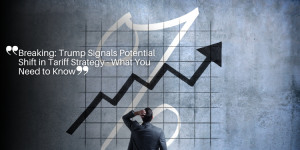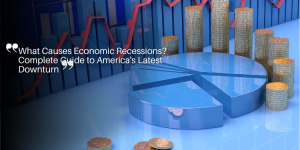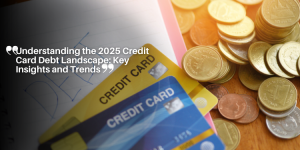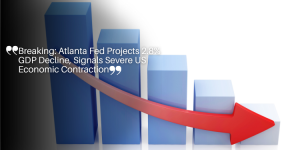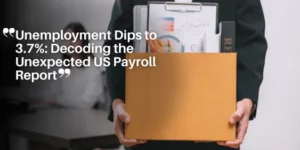US Credit Card Default Rates Surge to 13-Year High
Record-Breaking Default Rates: A 2024 Overview 📊💳
The year 2024 has set an alarming record with the highest U.S. credit card default rates since 2010.
Banks have written off a staggering $45.7 billion in debt during the first three quarters of this year, marking a substantial 46% increase from 2023.
This surge in default rates is ringing alarm bells across the economic landscape, hinting at potential distress despite some optimistic economic indicators.

An Unsettling Trend ⚠️
The sharp rise in credit card defaults is a major red flag for the economy.
Even though metrics like GDP growth and job creation paint a positive picture, the underlying financial strain on households cannot be ignored.
The consistent battle with inflation and the ongoing impact of high borrowing costs are putting immense pressure on consumers.
Households have grappled with inflation for years, and although it has cooled to 2.7% from the 9% peak of 2022, prices are still significantly higher than pre-pandemic levels.
This persistent elevation in costs, coupled with rising interest rates, has squeezed many consumers’ ability to manage their debt.
As a result, banks are forced to confront mounting losses as they write off uncollectible debts, reflecting the financial struggles faced by many Americans.
Impact on Financial Institutions 💸
The financial sector is feeling the heat as well.
The 46% increase in debt write-offs compared to last year is a clear indicator of the increased risk and financial stress banks are currently shouldering.
According to data from the FDIC, the $45.7 billion in debt written off in 2024 is reminiscent of the dire economic conditions of 2010, post-Great Recession.
Some companies, like Capital One, have also reported rising charge-off rates, further highlighting the strain on the credit market.
The substantial increase in charge-offs is not just a number; it represents real financial hardship for millions of Americans struggling to keep up with their financial obligations.
Economic Indicators vs. Consumer Realities 📉
Despite encouraging signs such as GDP growth, employment gains, and increasing personal incomes, the economic reality for many households remains bleak.
The Federal Reserve’s aggressive interest rate hikes are a significant factor exacerbating this situation, as they have substantially increased the cost of carrying credit card debt.
Over the past year, consumers who couldn’t clear their monthly balances shelled out $170 billion in interest payments.
This figure underscores the heavy financial burden carried by millions of American households, further stressing the precarious nature of their financial health.
The Road Ahead 🚧
| Aspect | Details |
|---|---|
| Q4 Forecast | Expected increase in defaults due to holiday spending |
| Policy Outlook | Potential tariffs and stricter immigration laws from President-elect Trump |
| Inflation Risk | Consumer prices may rise further due to policy changes |
| Monetary Policy Limits | Federal Reserve may have limited ability to cut rates |
| Overall Outlook | Record-high default rates and increasing debt point to a challenging road ahead |
| Call to Action | Caution and resilience needed from policymakers, institutions, and consumers |
The Growing Credit Card Burden 💳📈
Rise in Total Credit Card Debt 📊
A significant financial strain has manifested for many Americans as total credit card debt reaches an unprecedented $1.17 trillion.
This represents a notable increase of 8.1% from the previous year, highlighting the growing dependency on credit for everyday and unexpected expenses.
The steep rise underscores the pressing issue of financial management as households constantly juggle between income growth and the cost of living, which has yet to regress to pre-pandemic levels.
Surge in New Credit Card Debt 💵
Consumers are continuing to rack up credit card debt at an alarming rate. Just in the third quarter of 2024 alone, $24 billion in new credit card debt was added.
This trend signals an ongoing struggle for many Americans who might be using credit cards to bridge gaps in their finances, perhaps influenced by the high costs of goods and services.
This behavior is not just a reflection of consumer habits but also of the economic challenges faced by households across the country.
Increasing Delinquency Rates ⚠️
Further evidence of financial distress can be seen in the rising overall consumer debt delinquency rates.
The delinquency rate has climbed to 3.5% from 3.2%.
This uptick, albeit small, is significant as it points to the increasing number of individuals falling behind on their debt payments.
The repercussions of such trends are far-reaching, impacting not only the individuals involved but also the larger financial system.
Banks and financial institutions are forced to contend with a higher rate of defaults, placing added stress on their operations and potentially affecting the broader economy.
The growing burden of credit card debt coupled with rising delinquency rates points to an underlying financial instability for many households.
The scenario suggests that even while some economic indicators might appear positive on the surface, the overall picture for many individuals remains precarious.
These financial pressures are likely to compound as holiday spending trends weigh heavier on consumer wallets, indicating potential further increases in defaults.
Economic Contradictions: Prosperity and Struggle 💡💸
While 2024 has seen some positive economic metrics, the rising credit card default rates paint a picture of financial stress for many Americans.
Despite GDP growth and job creation, numerous households continue to struggle with elevated prices and soaring debt levels.
Default Rates Amid Positive Indicators 📉
The U.S. economy has shown signs of prosperity with a solid GDP growth rate and robust job creation.
This normally would bode well for consumer financial health. However, credit card default rates have surged, reaching levels not seen since 2010.
This strange juxtaposition suggests that the benefits of economic growth are not being felt equally across the population.
Persistent Inflation Pressures 💥
Although inflation has cooled down from its peak of 9% in 2022 to 2.7% now, prices remain notably elevated compared to pre-pandemic levels.
This continued high cost of living means that even as household income grows, the overall purchasing power remains constrained.
Daily essentials, including food, housing, and energy, have climbed to price points that strain many family budgets
Inflated Costs and Interest Rates 📉💳
If inflation rises due to new tariffs and policy changes, the Federal Reserve may have limited room to maneuver regarding interest rates.
Elevated inflation would necessitate maintaining or even increasing interest rates to keep it in check, which would further hike borrowing costs for consumers.
This scenario creates a precarious balance, where consumers are burdened with high-interest payments, contributing to a cycle of increasing defaults and economic strain.
The Fed’s current rate hikes already resulted in $170 billion in interest payments over the past year, reflecting the heavy toll on households.
Without the possibility of reduced interest rates, consumers will continue to face substantial financial pressure.
As banks grapple with rising defaults and charge-offs, the broader economic repercussions are unavoidable.
The coming year will require careful navigation by policymakers, financial institutions, and consumers to mitigate further economic distress.
Moving forward, understanding these dynamics will be crucial for devising effective economic strategies.


